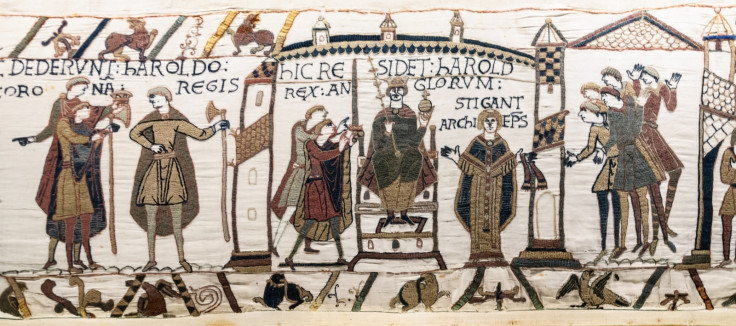After nearly a millennium, the Bayeux Tapestry will cross the Channel and be in Britain's hands
The work depicts the Norman invasion of 1066.

The Bayeux Tapestry is set to come to British shores for the first time in its 950-year history in what is hoped will be a sign that ties between the UK and France will prosper despite Brexit.
French president Emmanuel Macron will reportedly make the announcement on his visit to Sandhurst, in Berkshire on Thursday (18 January), the Times reported.
The tapestry is 70 metres long and half a meter high and depicts the events leading up to and including the Battle of Hastings in 1066, in which William the Conqueror deposed Harold, the last Anglo-Saxon king.
An agreement is expected this week but it is unlikely to be moved for about five years and there is no word on where exactly in the UK it would be displayed.
One Whitehall official said according to the paper: "This underlines both governments' recognition of the depth of a relationship rooted in our shared history".
There have been two failed attempts to bring the tapestry to Britain. One was for the Queen's Coronation in 1953 and the other, for the 900-year anniversary in 1966, although England's victory in the World Cup year would have been some consolation.
Tests will be conducted to ensure the tapestry can be moved safely, the director of the Bayeux Museum, Antoine Verney said.
There is still some doubt over where the tapestry was originally made, with some experts suggesting that it was woven in England, although this is likely to be glossed over when the announcement is made.
The gesture of good will is expected to cement good relations between Britain and France which will be important as Theresa May negotiates the terms of Brexit. Britain will also reportedly offer helicopters to help with French efforts to fight Islamist militants in northern Africa.
A spokeswoman for Theresa May said that the summit between French and British leaders will also highlight how the countries can work together to tackle climate change, air pollution, cyberthreats and genomics.






















